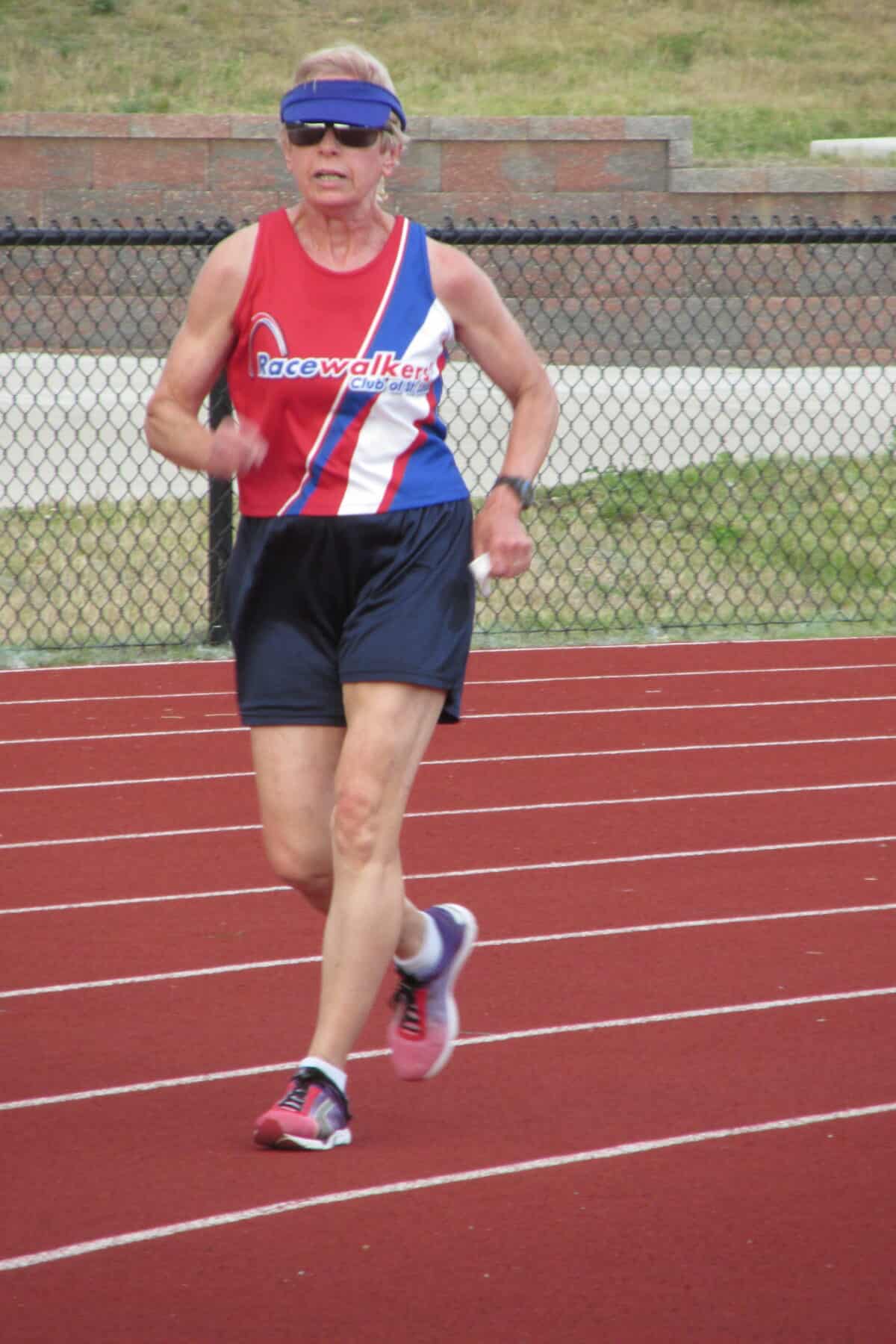Race walkers are so grounded — out of choice and necessity.
First, they are keenly aware that their sport seems both boring and dorky. So be it, they say with a shrug.
Jerry Young cast aside competitive running in high school to focus on race walking. Though he often caters to runners through his career in the athletic apparel business, Young remains devoted to walking and is a diehard member of the Racewalkers’ Club of St. Louis.
“There’s glamour in running,” he said. “You go into a running store with a friend who runs, and the sales staff are all runners, so they’ll sway you to running gear. But most people would be better off walking.”
Which highlights that their allegiance is “grounded” in science. A 2016 report from engineers Jaclyn Norberg and Anne Schmitz revealed that joints carried less than half the load (and impact) while race walking, compared to running. Translation: Race walking is easier on the joints, so it can provide a competitive outlet for erstwhile runners whose anatomy can’t take the pounding.
Race walkers also have an advantage in weight loss or weight control. At speeds of about 5 mph, or 12 minutes per mile, race walking burns 20 to 30 percent more calories than running at the same pace.
Walking the Line
Race walkers even embrace the sport’s potential downside: the technique required not only to achieve maximum results but to be legal. They follow two directives that serve as guardrails and separate them from the garden-variety, neighborhood power walkers:
- The leg moving forward must be straight from the time that it first contacts the ground until it is in a vertical position. No bend at the knee.
- One foot must be in contact with the ground at all times, unlike running.
So, race walkers have no choice but to be grounded.
The shorthand for race walking form is heel-toe-heel-toe. In England, race walkers are known affectionately as wigglers because of the exaggerated sway in their hips.
The reality is more complicated, the technique more akin in sophistication to that of a shot putter or hurdler. “The thing we hear most often is that it’s too hard to switch from running,” said Lorraine Ramonczuk, a longtime member of the Racewalkers’ Club.

Nancy Sido of Racewalkers’ Club of St. Louis.
And that’s before judges get involved. For races staged on tracks, four judges certified by USA Track and Field stand around the circuit. Each carries two yellow paddles and a red card. They point a paddle with a squiggly line at a competitor with both feet off the ground. They wave a paddle with a bent line to warn a competitor that his/her front knee is bent. And they’ll flash the red card after repeated warnings to recommend disqualification to the chief judge. Three red cards, and you’re out.
But Ramonczuk is quick to note that the local judges don’t want to recreate the Spanish Inquisition. “We do a lot of vocalizing about how to correct form, but we don’t wave the paddles too much,” she said. “We want people to learn technique, but we don’t want to scare them away.”
Fresh Feet
The Racewalkers’ Club of St. Louis is eager for newcomers and offers one-on-one instruction to first-timers. The designated orientation leader usually is Ruth Eberle, who guides newbies around the track with coaching on every stride, if need be. But Young and other club members also willingly lend a hand. They have shown up for races, only to put their competitive aspirations aside for a curious acolyte.
“It’s a very supportive group,” Young said. “Sure, we have competitive races, but it’s a group designed for learning.”
The club organizes races that range from 1,600 to 5,000 meters on the Pattonville High School track in July, two races in Tower Grove Park in August, and finishes with a fall series at Pattonville in October. To work on conditioning between club events, many members join training programs for runners sponsored by the local running stores. The shops also are good sources for shoes specific to race walking, which have a lower heel and more flexible sole than traditional walking shoes.
In addition to their own races, club members compete in the Golden Games in St. Charles and the Senior Olympics, as well as the Show-Me State Games and the area’s big road races. Ramonczuk, for example, walks fast enough to win age group medals in such events as the GO! St. Louis and MO’ Cowbell half-marathons.
“It’s cool,” she said, “to go do a race and pass some runners.”
Upcoming Races
Mark your calendars for these Racewalkers’ Club of St. Louis events:
- 8 a.m. August 21, Tower Grove Park-Turkish Pavilion: 5K/10K
- 2:30 p.m. October 2, Pattonville High School: 3,000 meters
- 2:30 p.m. October 9, Pattonville: 5,000-meter USA Track and Field Ozark Association Open/Masters Championship
- 2:30 p.m. October 16, Pattonville: 1-hour race
- 2:30 p.m. October 23, Pattonville: 1,500 meters
Learn more at racewalkstl.org.
Author: Kathleen Nelson is a regular contributor to Terrain Magazine.


Leave A Comment